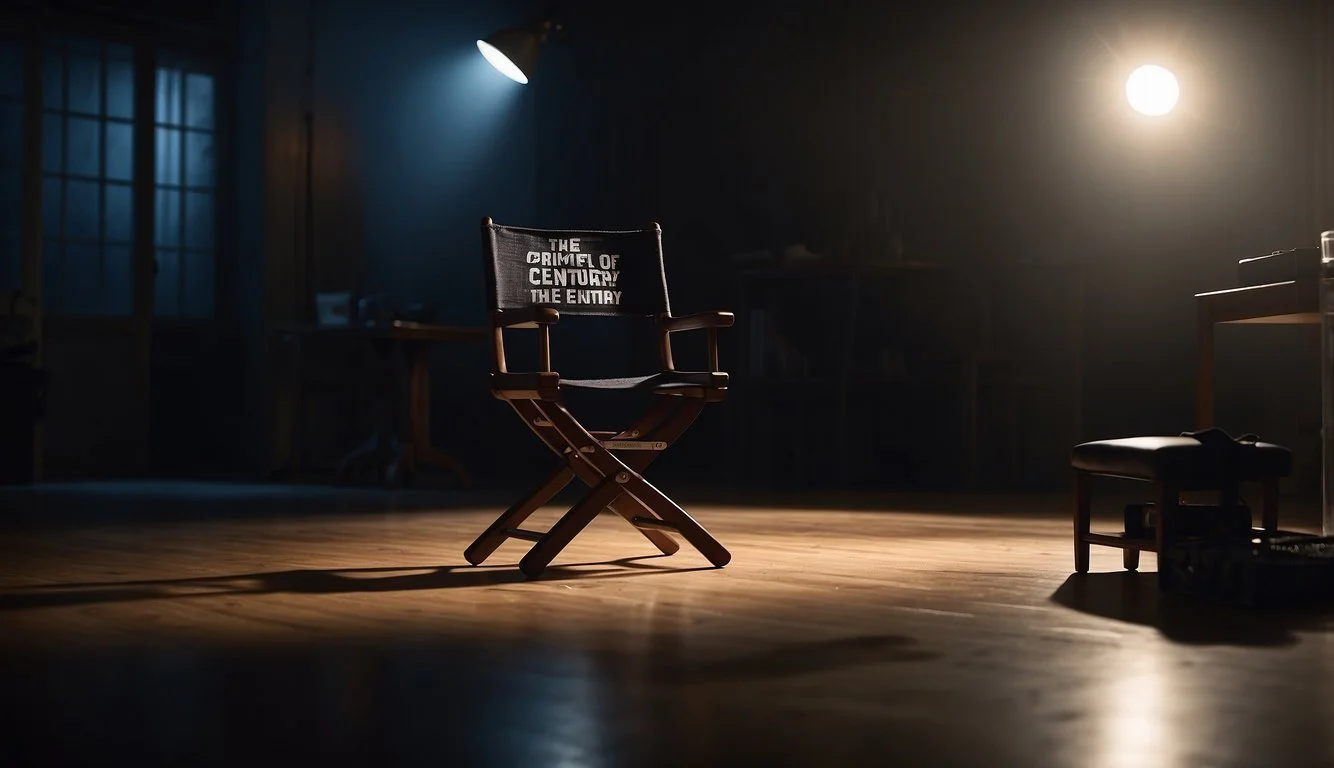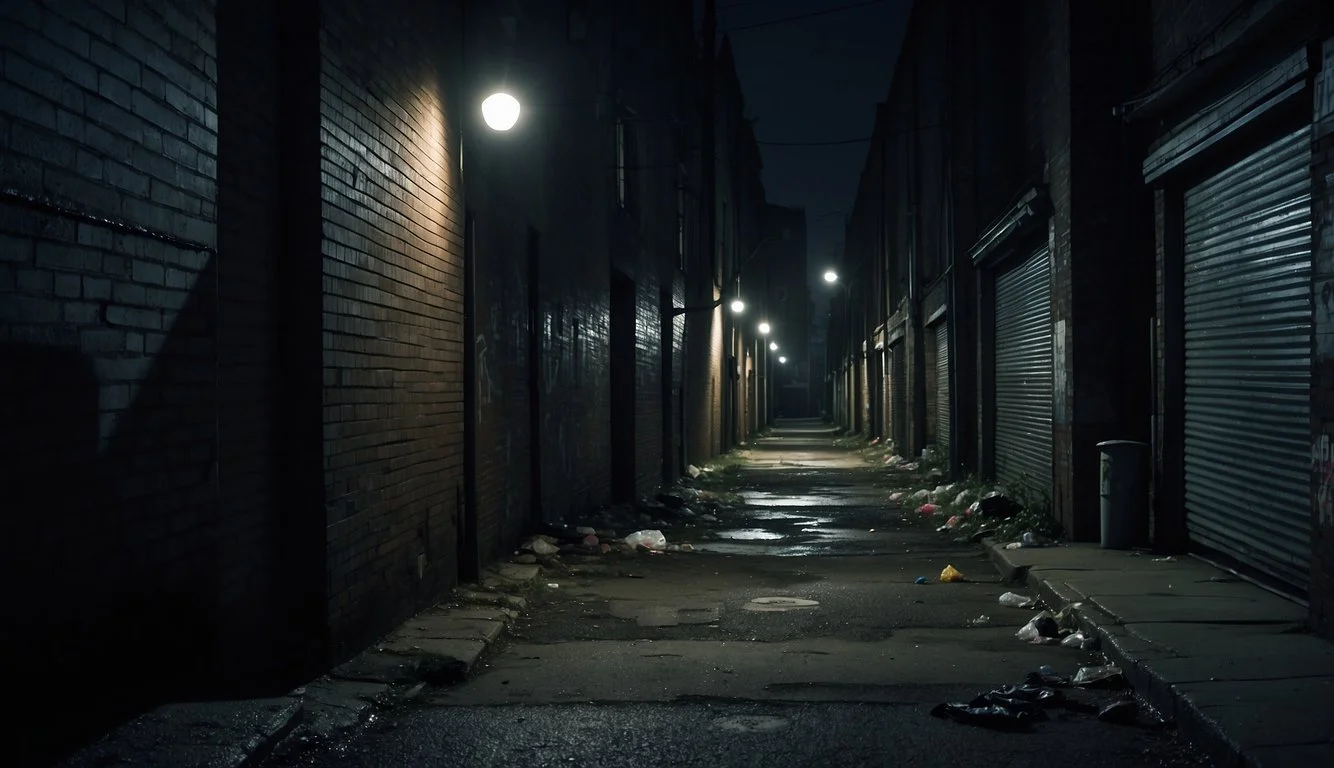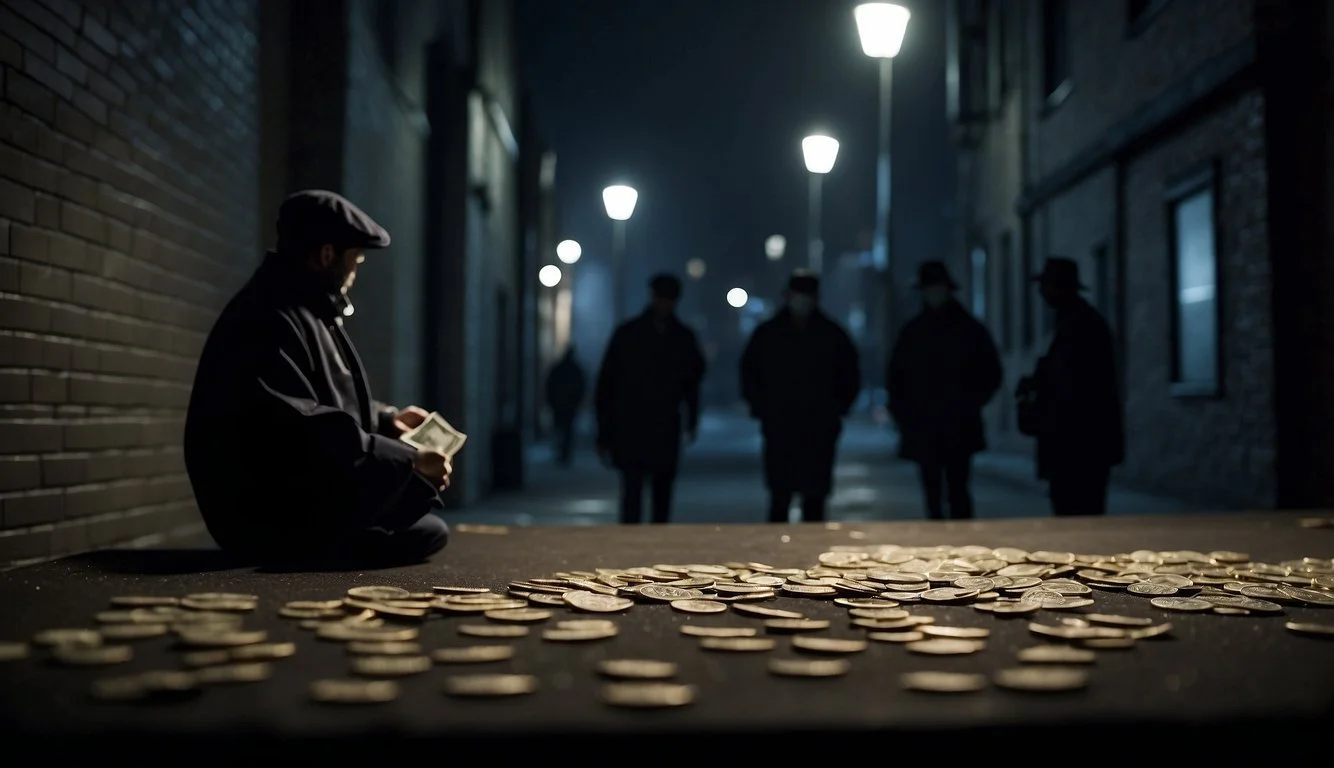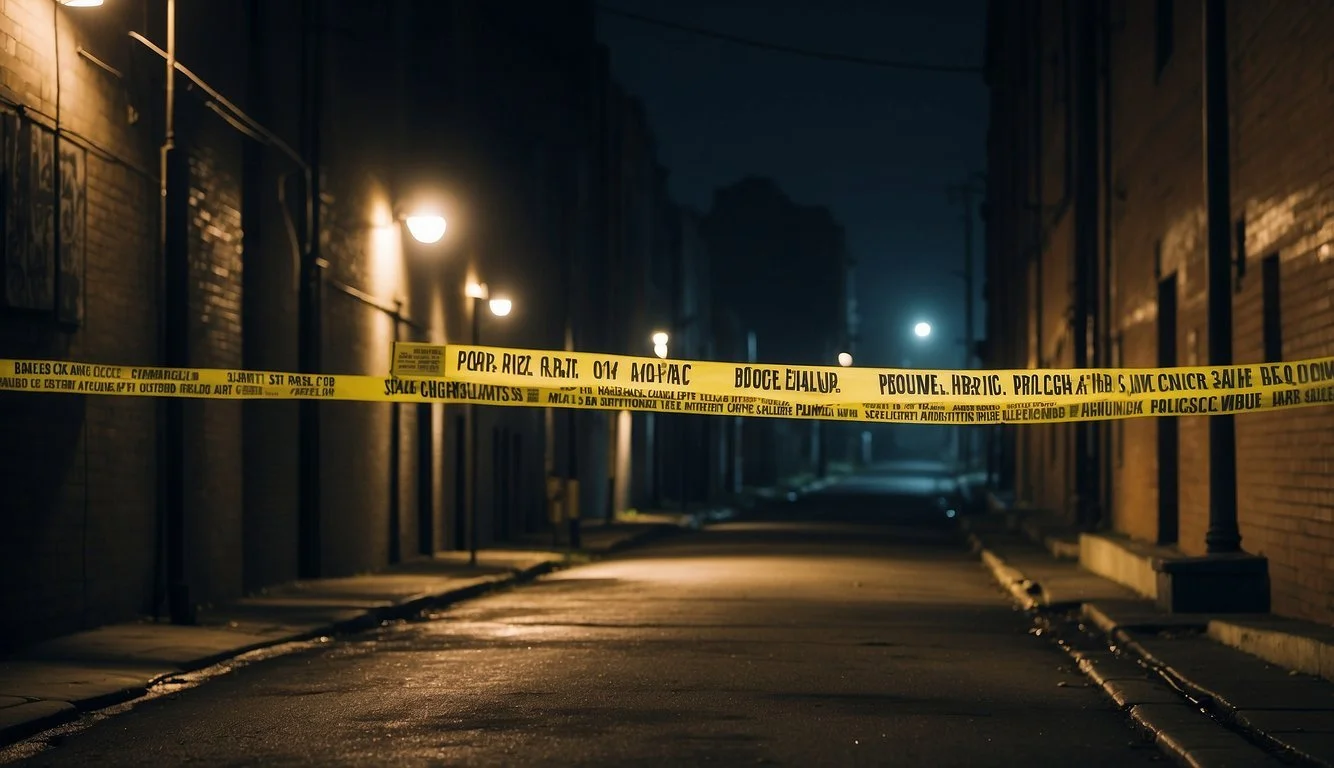Documentary Review: The Crime of the Century (2021)
An In-Depth Analysis of America's Opioid Crisis
Documentary Review: The Crime of the Century (2021)
The Crime of the Century (2021) is a powerful HBO documentary by Alex Gibney that examines the harrowing details of America's opioid crisis. Drawing from a myriad of sources, the film showcases the roles of major pharmaceutical companies in orchestrating what has become a national catastrophe, resulting in the deaths of over 500,000 Americans. Through compelling evidence, Gibney’s documentary paints a stark picture of corporate greed and lack of accountability.
Throughout the documentary, viewers see how billion-dollar pharmaceutical companies have manipulated regulations and evaded substantial penalties. Purdue Pharma, among others, faces intense scrutiny for their part in pushing opioid medications despite the rising casualties. This four-hour exposé leaves no stone unturned, revealing systemic failures and the human cost of this epidemic.
The Crime of the Century not only highlights the devastating impact on individuals and families but also scrutinizes the broader societal consequences. Gary Blinn emerges as a significant figure, illustrating the human suffering catalyzed by corporate malfeasance. This documentary is essential viewing for anyone seeking to understand the depth of the crisis and the mechanisms driving it.
Overview of 'The Crime of the Century'
The Crime of the Century is a powerful two-part documentary directed by Alex Gibney. It focuses on the devastating opioid epidemic in the United States.
Gibney's film is an investigation into how pharmaceutical companies, particularly Purdue Pharma and the Sackler family, played a critical role in creating this crisis.
The documentary presents compelling evidence and interviews with industry insiders, whistleblowers, and victims. It details the mechanisms of how these companies aggressively marketed opioids while downplaying their addictive nature.
Released on HBO in May 2021, the film paints a damning picture of corporate greed intertwined with public health failures. Gibney sheds light on regulatory gaps and political ties that enabled the wide distribution and abuse of opioids.
By exploring the opioid epidemic's origins and impacts, the documentary emphasizes the significant human cost with over 500,000 American deaths linked to opioid overdoses since 2000.
The film underscores the systemic corruption and highlights the impunity with which these powerful entities operated. Through archival footage, court documents, and firsthand accounts, it vividly portrays the crisis.
The Crime of the Century does not just criticize but also educates. It brings attention to the need for accountability and reform in the pharmaceutical industry and regulatory practices.
The documentary is an essential watch for anyone seeking to understand the complex factors that fuelled this public health catastrophe.
Director's Profile
Alex Gibney is renowned for his investigative style and prolific output in the world of documentary filmmaking. His works focus on uncovering truths and exploring complex subjects with a sharp, analytical lens.
Alex Gibney's Filmmaking Style
Gibney's approach to filmmaking is characterized by a meticulous examination of his chosen topics. He employs a combination of first-person narratives, archival footage, and investigative interviews. His style is direct and immersive, making the viewer a part of the investigative process. Gibney’s films often tackle systemic issues such as corruption, human rights abuses, and corporate malfeasance, bringing a sharp focus on the powerful entities involved.
Using a balanced mix of storytelling techniques, he creates a narrative that is both engaging and informative. His ability to distill complex subjects into accessible narratives underscores his reputation for creating compelling documentaries that resonate widely.
Previous Works by Alex Gibney
Alex Gibney’s extensive body of work includes notable documentaries like Enron: The Smartest Guys in the Room and Taxi to the Dark Side. Enron delves into one of the largest corporate scandals in American history, earning critical acclaim for its detailed exposition. Taxi to the Dark Side, a profound exploration of U.S. interrogation practices, won an Academy Award for Best Documentary Feature.
Other significant works include Going Clear: Scientology and the Prison of Belief, which investigates the controversial practices of the Church of Scientology, and The Inventor: Out for Blood in Silicon Valley, offering a critical view on the Theranos scandal. Each film showcases his ability to reveal deep-seated issues within powerful organizations.
Key Themes and Messages
"The Crime of the Century" delves deeply into the complexities and culpabilities surrounding America's opioid crisis. It is a thorough investigation into how pharmaceutical companies, driven by profit, exacerbated a public health disaster with limited governmental intervention.
Opioid Epidemic
The documentary highlights the catastrophic effects of the opioid epidemic in the United States. Over 500,000 Americans have died due to opioid overdoses. The narrative unpacks the history of opioid prescriptions, starting with the aggressive marketing of OxyContin. Footage and interviews feature the stories of individuals and families who have been tragically affected. By focusing on personal accounts, the film provides a human face to the staggering statistics.
Corporate Greed
A major theme is the unscrupulous behavior of pharmaceutical companies. The film exposes how these corporations, particularly Purdue Pharma, prioritized profits over people. Through deceptive marketing practices and minimizing the addictive nature of opioids, they generated billions in revenue. Interviews with whistleblowers and former employees illustrate how these companies systematically avoided accountability, even as the death toll grew.
Governmental Oversight
The documentary also tackles the role of governmental agencies in the epidemic. It scrutinizes the failures and loopholes within regulatory bodies like the FDA and DEA. Evidence presented in the film shows how these agencies were often complicit, either through political pressure or lack of action. By exploring specific legislative and administrative failures, viewers gain insight into how regulatory negligence contributed to the crisis.
Critical Analysis
"The Crime of the Century" dives into the complex web of America's opioid crisis, exploring the culpability of pharmaceutical companies, the impact on public health, and the evidence against major players like Purdue Pharma.
Narrative Structure
The documentary uses a two-part structure to provide an in-depth examination. Each part is meticulously chronological, allowing viewers to follow the evolution of the crisis from inception to its devastating impacts today. This approach lends clarity to the narrative, making complex issues more understandable. Alex Gibney's direction ensures a cohesive flow, maintaining audience engagement through detailed storytelling and significant revelations at strategic points.
Cinematography
Visually, "The Crime of the Century" uses a mix of archival footage and modern interviews. High-quality cinematography enhances the gravitas of the subject matter. The use of subdued lighting during interviews accentuates the gravity and seriousness of the topic. Visual aids, like graphs and charts, are employed to illustrate statistical data, providing a more comprehensive understanding of the crisis.
Interview Techniques
Interviews form a critical component of the documentary. Gibney employs a range of voices including experts, victims' families, and investigative journalists. These interviews are conducted in a straightforward and respectful manner, allowing subjects to share their insights without interruption. The inclusion of Richard Sackler's deposition footage adds a significant element, giving viewers direct exposure to key figures involved in the crisis.
Music and Sound Design
The sound design and music score effectively underscore the documentary's tone. Background music is deliberately subdued, emphasizing the gravity of the subject matter without sensationalizing it. Sound effects are used sparingly but effectively, such as in moments highlighting personal tragedies or pivotal events. This careful attention to audio elements enhances the overall impact, fostering a deeper emotional connection for the audience.
Real-World Impact
"The Crime of the Century" (2021) has garnered significant public attention and spurred discourse about the opioid crisis. Its critical examination has resonated with the public and influenced policy changes, while also setting a new bar in documentary filmmaking.
Public Reaction
The release of "The Crime of the Century" elicited a strong response from viewers. Many lauded the documentary for its thorough research and unflinching portrayal of corruption within pharmaceutical companies.
Social media platforms became hotspots for discussions, with countless users sharing personal stories of loss due to the opioid epidemic. The documentary’s powerful storytelling and detailed evidence helped raise awareness and foster a deeper understanding of the crisis among a broader audience.
Influence on Policy
The documentary has had a measurable impact on policy discussions. Legislators and public health officials took note of the allegations and evidence presented, which emphasized the role of pharmaceutical companies in fueling the opioid crisis.
In some regions, the documentary influenced calls for stricter regulations and greater accountability for pharmaceutical companies. Policymakers initiated new investigations and proposed laws aimed at curbing prescription drug abuse and improving transparency in the pharmaceutical industry.
Contribution to Documentary Filmmaking
"The Crime of the Century" contributed significantly to the landscape of documentary filmmaking. Director Alex Gibney's meticulous approach combined investigative journalism with compelling visual storytelling. This method set a new standard for documentaries tackling complex, real-world issues.
The film’s innovative use of interviews, leaked documents, and dramatic reenactments enhanced its impact. By weaving these elements together, Gibney offered a gripping narrative that both educated and engaged viewers. Aspiring documentary filmmakers often cite this work as a benchmark in the genre for its effectiveness and depth.
Comparative Discussion
"The Crime of the Century" (2021) by Alex Gibney is an intense exposé on the opioid crisis, its corporate culprits, and its lasting societal impact. This type of documentary contrasts with dramatized portrayals and finds parallels in other investigative works.
Similar Documentaries
"The Crime of the Century" shares thematic similarities with "The Pharmacist" and "Dirty Money".
"The Pharmacist" focuses on a father's quest to expose the drug industry's reliance on opioids, mirroring Gibney's detailed look at pharmaceuticals.
Meanwhile, "Dirty Money" explores corporate greed and corruption, including episodes on the opioid crisis, tying directly to the themes of "The Crime of the Century."
These documentaries employ a fact-driven approach, featuring interviews, court documents, and insider testimonies to deepen the investigation into large-scale misconduct. This fuels a broad understanding of systemic issues in the pharmaceutical industry.
Documentary vs. Dramatization
Documentaries like "The Crime of the Century" offer a factual, evidence-based lens into real-life events, relying on interviews, archival footage, and direct testimonials.
In contrast, dramatizations such as "Dopesick" use actors to recreate events, aiming to convey the emotional and personal impact of the crisis.
Dramatizations allow for artistic liberties, potentially heightening emotional responses, but may stray from strict factual accuracy. Documentaries, beneficial for viewers seeking detailed and accurate information, present a precise narrative driven by verified sources, illuminating the scope and depth of the opioid epidemic. Both forms engage audiences differently but serve to raise awareness of critical issues.
Viewer Reception
"The Crime of the Century" garnered varied reactions from viewers. Many appreciated its investigative approach and thorough coverage of the opioid crisis. They found the documentary insightful and compelling, shedding light on the corporate malfeasance behind the epidemic.
Positive Points:
Detailed storytelling
In-depth investigation
Clear narrative structure
Critics, however, pointed out certain drawbacks. Some felt that the documentary could have been more hard-hitting. Others mentioned that the film was too long, making it difficult to maintain engagement throughout its entirety.
Criticisms:
Perceived lack of intensity
Lengthy runtime
Ratings across various platforms reflect this mixed reception. On Rotten Tomatoes, the miniseries' reviews indicate both high praise and critical feedback, showing a balanced range of opinions.
Rating Source Score Rotten Tomatoes 4.9/10 Variety Mixed Roger Ebert Positive
The documentary has also sparked conversations and debates on social media, with viewers sharing their thoughts and personal experiences related to the opioid crisis. This engagement highlights the documentary's impact in raising awareness and prompting discussions on this important issue.
Final Thoughts
The Crime of the Century provides a sobering look at the opioid epidemic. Directed by Alex Gibney, the documentary dissects the corporate malfeasance and regulatory failures that fueled the crisis.
Fact-Driven Approach: The film uses extensive evidence to illustrate how pharmaceutical companies, such as Purdue Pharma, prioritized profits over public health.
Gibney’s skillful storytelling brings attention to the role of political and regulatory entities in enabling this public health disaster.
Visuals and Interviews: The documentary is visually engaging, utilizing interviews with key players and victims to provide a comprehensive perspective.
List of Key Points:
Examination of big pharma's role
Critique of government oversight
Personal stories from affected families
The film challenges viewers to consider the accountability of those who contributed to the opioid crisis.
Criticism: Some viewers may find the content dense and the updates on recent legal proceedings limited.
Despite this, The Crime of the Century remains an important film for those looking to understand the factors behind the opioid epidemic. Its clarity and depth make it a significant contribution to documentary filmmaking.







